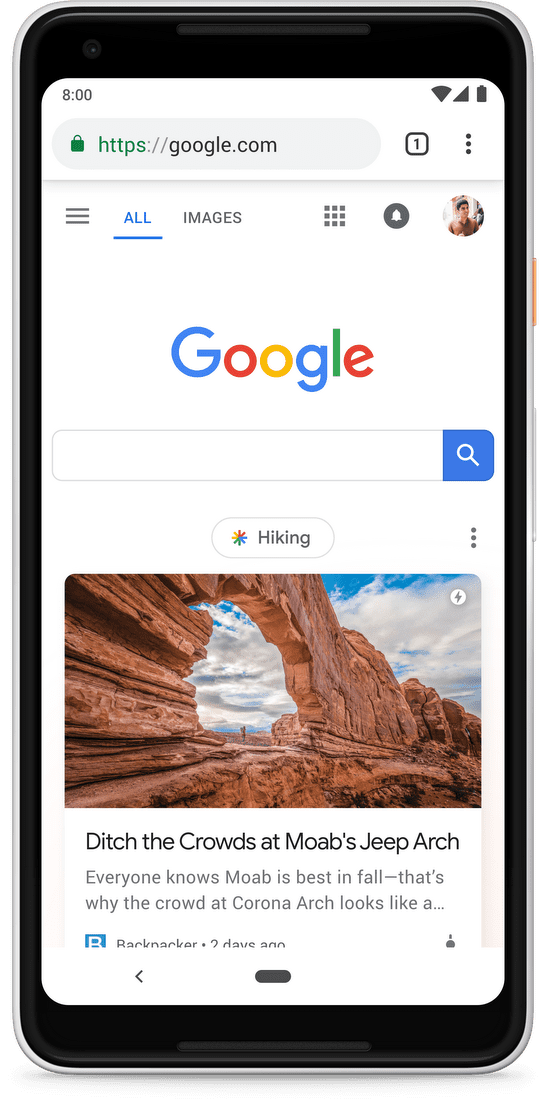Google Discover For Huge (Free) Organic Traffic
By Mike Cynar
Google Discover is one of the easiest ways to get an endless supply of free traffic to your website. Today we’re going to discuss what you need to do to get your share of the pie. There are also a few things that you will be required to implement, or at least have someone that can do it for.
Those items are:
- Schema Markup
- Clearly Defined Topics
- Click Value | Click Bait
- Site Speed | AMP Pages
We will cover each one of these topics in a moment. First, let’s cover the basics.
What is Google Discover?
Google is changing the way we access information now. Previously, you’d open up your phone and go straight to Google Search with a search bar in sight located at the top of every app or on an exact page if it was web-based. Now though, there are also recommended articles available right away when opening through either iOS or Android devices for users who scroll down below their usual searches by default.
The news feed is a never-ending list of articles that are based on your interests and what you have searched for in the past. You can use this to find interesting things quickly without having to search yourself or go through an endless stream of posts like before.
How Do I Get Viewed in Google Discover?
You can be featured here by doing a good job of indexing your site. Just like Google organic, you should make sure that all content is indexed properly and in the right order so they can appear on this page when someone searches for it.
There are several requirements that you will need to follow, and also a few myths I would like to clarify.
1-Schema Markup Coding
The first, and likely most critical requirement that I’ve seen completely ubiquitously is schema markup.
Schema markup is code that helps search engines better understand your content. This will help them return more detailed and informative results for you when searching online, so it’s important to know how this works.

Google Discover doesn’t seem to be very receptive towards sites that use other types of markup. Analytics has revealed this time and again, as nearly every feature from Google Discover is an article or news story.
With the growing popularity of gardening blogs, it is becoming more difficult for readers to find some of their favorite blogs on the subject. However, we are not seeing any schema markup on these sites yet and this could be a reason why they’re failing when it comes to ranking high in search engines.
Learn more about schema here.
2-Clearly Defined Topic
Now the topic layer is surprisingly unsubtle as far as we can tell and it’s also surprising to us because Google’s organic algorithm used to be so spot on.
When Google tries to understand what you are interested in, they look for some broad topics. For example, if your interests were technology and sports then these would be two of the general areas that can define a person’s preferences. Also articles or content covering one of these topics will typically do well on search engine results pages (SERPs).
In other words, Google will be very interested in the topics you are most concerned with. To do well on Google, we recommend creating articles that focus on clearly defined topics.
So, for example, some recipe blogs site actually do quite well in Google Discover. I think that’s because the published content clearly defines their topics, and it’s never really bad to recommend their content to someone who’s interested in cooking tips. For example, on some sites articles that do very well are ones about famous people or major brands. These clearly defined topics seem to be important for their success.
3-Click Value (Click Bait)
A term that has emerged is “clickbait” which means content whose main purpose is to attract attention and encourage visitors to click on a link. I would like in this to click value.
When you optimize for YouTube, Twitter, Instagram, or any large social media platform then the next requirement is clickiness. If I had to be more direct, I’m basically saying you need Clickbait. In the marketing world, that clickbait is a bad word, but it’s possible to do it and remain completely ethical, and not mislead people.
The titles that Google Discover uses to display articles are designed in a way to draw readers’ attention and encourage them to click on the link. The page’s layout also allows its users gain more understanding of how certain details can be entwined with other information, which helps create mental connections between different subjects.
About the headline. It is not a title tag, like we use when to tell Google what a page is about, and it’s also not an Open Graph title tag used for social media optimization. This is the schema markup code. The maximum amount suggested characters for this is110.
4-Page Speed | AMP Pages
The page speed of a webpage is the amount of time that it takes for a webpage to load. This number can be affected by different factors such as server, image compression, and file size.
For Google Discover, it is much more important for pages to load quickly than it is for organic search. I have seen people claim that AMP (accelerated mobile pages) are a requirement of the platform.
AMP pages are stripped down HTML copies of existing webpage content that offer faster load times than standard HTML5 documents. Websites can serve AMP pages by implementing the rel=amphtml tag into their HTML, which tells Google to fetch and render an AMP version when it sees a request for this page in search results. Because these requests have much stricter requirements regarding how they must be served, errors related to them usually result in being completely blocked from indexing until everything is fixed (as opposed to just receiving low-quality scores). In order for websites’ AMPs not only appear on mobile devices but desktop too where speed matters more because users don’t want long load times as well as other issues with ads like pop-up ads or slow video playback.
You don’t actually need AMP Pages to appear and discover. But you do need to make sure to remove any code or images that might slow the time to render the page to the user.
Measuring Your Success on Google Discover
More and more of Discover’s data is being integrated with the Performance report for Discover. Before, it only included 16 months’ worth of performance information on content that had reached a minimum threshold number of impressions; now, discover traffic from Chrome has been added to this metric as well–bringing success tracking at least one step closer to reality! There are some caveats though: if you don’t have enough incoming visits over the last two years (at least 5k), then we won’t be able to include your site in these reports.




Comments are closed.